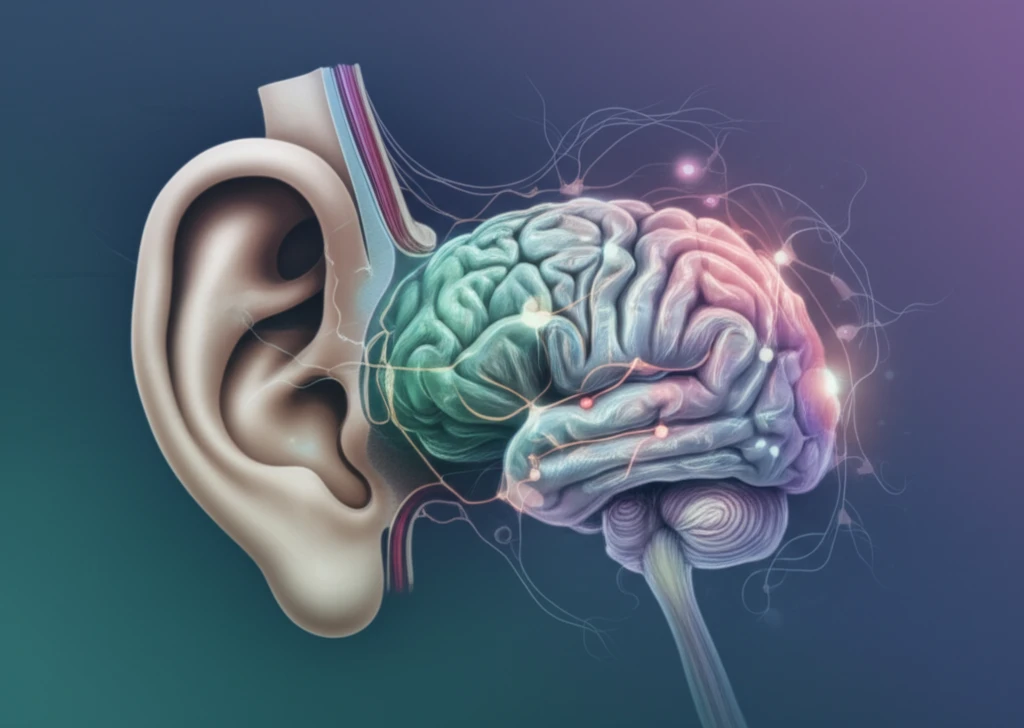
Tinnitus and Your Brain: Remodeling Cholinergic Pathways After Noise Exposure
"New research uncovers how noise-induced tinnitus may be linked to changes in the brain's hippocampus, offering potential insights into treatment."
Tinnitus, that persistent ringing, buzzing, or hissing in your ears, affects millions worldwide. While some adjust, many experience depression and emotional distress, highlighting the urgent need to understand and treat this condition effectively. Recent research sheds light on a surprising connection: changes in the brain's hippocampus after noise exposure might play a significant role in tinnitus.
Traditionally, tinnitus research has focused on auditory pathways, from the cochlea to the auditory cortex. However, accumulating evidence suggests non-auditory systems, including the limbic system (responsible for emotions and memory), are also involved. The hippocampus, crucial for memory and learning, is increasingly recognized as a potential key player in the tinnitus puzzle.
This article delves into a study investigating how noise exposure remodels cholinergic inputs—the communication pathways using the neurotransmitter acetylcholine—in the hippocampus, and how these changes relate to the development of tinnitus.
The Noise-Tinnitus-Hippocampus Connection: What the Study Revealed

Researchers at the University of Michigan explored these changes in guinea pigs, a common animal model for tinnitus studies. They exposed guinea pigs to noise and then examined their brains for changes in vesicular acetylcholine transporter (VACHT), a protein crucial for cholinergic neurotransmission. The team used varied methods to induce tinnitus and evaluated how animals with and without tinnitus differed.
- Noise Exposure and VACHT Reduction: Initial noise exposure led to a significant decrease in VACHT density in the hippocampus within two weeks.
- Tinnitus-Specific Changes: Animals that developed tinnitus showed a persistent reduction in VACHT density, especially in key hippocampal areas.
- Correlation with Tinnitus Severity: The degree of VACHT density reduction was negatively correlated with the severity of tinnitus.
Implications and Future Directions: Can We Rewire the Brain to Silence Tinnitus?
This research provides compelling evidence for the involvement of the hippocampus in tinnitus, particularly the role of cholinergic signaling. The discovery that tinnitus-specific changes occur in synapse-rich layers of the hippocampus suggests that synaptic processing in this area may be a critical factor in the pathophysiology of tinnitus.
These findings open new avenues for potential tinnitus treatments. Future therapies might focus on modulating cholinergic activity in the hippocampus to restore normal function and reduce tinnitus symptoms. Understanding the precise mechanisms by which noise exposure alters cholinergic signaling could lead to targeted interventions.
Further research is needed to explore the long-term effects of noise exposure on the hippocampus and to identify other potential therapeutic targets. Investigating the interactions between cholinergic, glutamatergic, and GABAergic systems in the hippocampus could provide a more comprehensive understanding of the neural circuits involved in tinnitus and pave the way for more effective treatments.
